| Gravity | Ballistic | Wind | Water | Animals | Humans |
|---|---|---|---|---|---|
 |
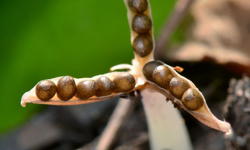 |
 |
 |
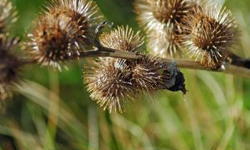 |
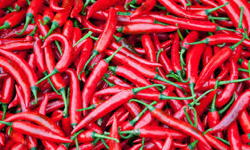 |
Introduction: Imagine, for a moment, that you're a land plant. Your roots are firmly fixed in the soil, and you can't move around. Wherever you landed and started to grow, that's where you're stuck for the rest of your life. You may be able to reproduce clonally, by sending runners underground, and popping up a new stem nearby, like an Aspen tree, but your ability to spread in this way is somewhat limited. If you want to colonize new habitat, and to avoid competing with your offspring, you need to distribute your seeds far and wide. There's an old saying that "the apple doesn't fall far from the tree," and that's a problem for plants. In this lab, we're going to review some of the diverse inventions plants have come up with to accomplish the task of seed dispersal and do some dispersal experiments to measure distance travelled.
Botanists divide seed dispersal strategies into several categories, based on the method of dispersal, as shown in the table below. Gravity is the simplest method, but plants often employ more than one strategy for seed dispersal. For example, coconuts fall from the tree, but they also roll, and they can be carried great distances by ocean currents. Seeds with ballistic dispersal sit inside a seed pod that dries out until tension causes it to burst, flinging seeds a considerable distance. Some seeds, like the dandelion, have parachute-like sails and are carried aloft by the wind. Tumbleweeds roll across the plains, also using wind to disperse their seeds. Sometimes plants take advantage of animals by producing seeds that hitchhike by clinging to the fur or feathers or, in other cases, produce a fruit or nut that the animals eat or cache. There are some very odd cases where a plant's seeds will only germinate after passing through the gut of an animal. Since ancient times, humans, who are really good at getting around, have also been important in the movement of seeds, sometimes by accident, and sometimes for agricultural purposes. The Polynesians, for example, carried their important plants from island to island as they colonized the south pacific. Another survival strategy is that seeds can lay dormant for many seasons, waiting for opportune conditions, and they can sometimes survive or even require degradation of the outer coat by fire or weather before they will germinate.
| Gravity | Ballistic | Wind | Water | Animals | Humans |
|---|---|---|---|---|---|
 |
 |
 |
 |
 |
 |
A tumbleweed is not a particular plant species, but rather a seed dispersal strategy employed by plants from a number of families. The above-ground, bushy part of the plant flowers, produces seeds, dries out and snaps off at the base, and the wind rolls it to new locations, dispersing seeds as it goes. American pioneers, headed west in wagon trains, noted that tumbleweeds were common across the great plains of the central United States. However, these invasives actually originated in the Russian steppes, were accidentally introduced by the settlers and their cattle, and rolled west a little faster than the pioneers themselves, creating the false impression that they had always been there. Thriving on the disturbance created by tilling soil, the Russian thistle is now symbolic of the American wild west.
This video shows how the helicopter seed from a maple tree, called a samara, flies.
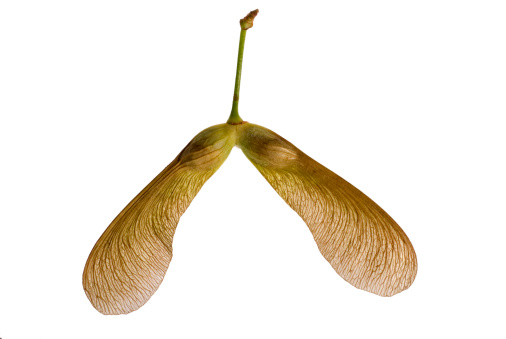
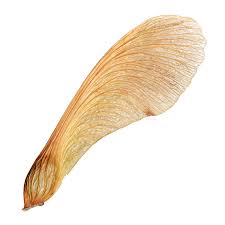
A maple tree seed is a samara.

Seeds with wings, like maple seeds, are called samaras. If you can find a nearby maple tree, collect a few dozen seeds and release them (in a consistent way) from the top of a ladder or from a balcony. Measure the release height, direction travelled, and distance travelled, and note the wind speed and direction at the time of release. Indicate the condition of the wing (from 1=poor, 2=good, 3=excellent)
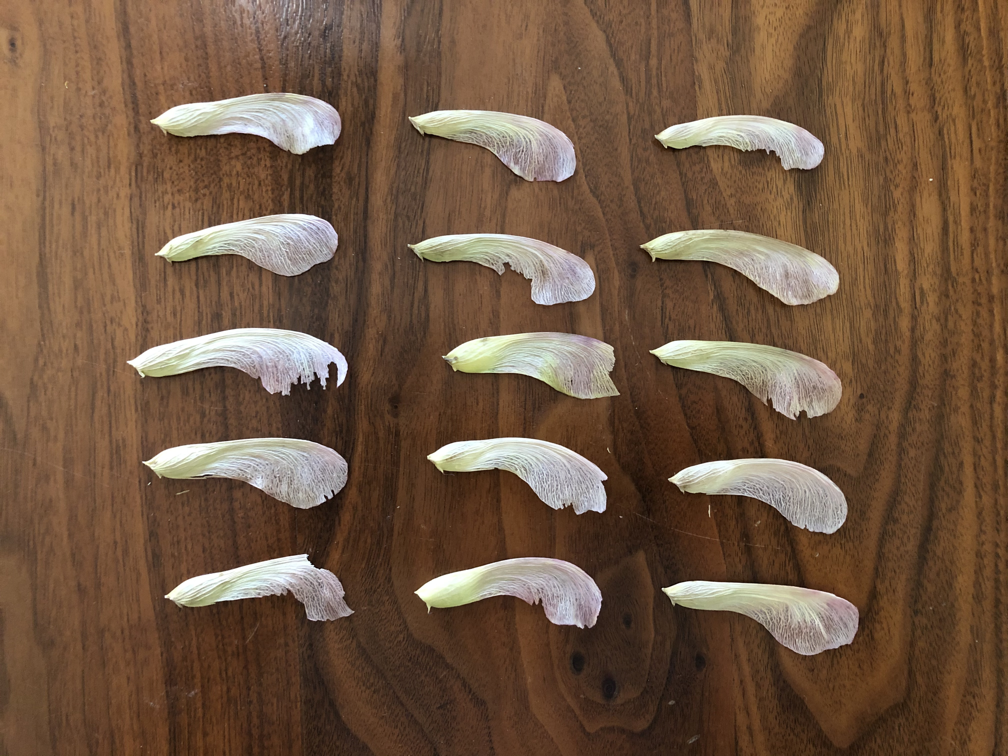
Does condition affect flight performance?
If you can't find any maple seeds, you can make your our own paper samaras and see how well they fly. Or, if you prefer, you can 3-D print one. This would control for condition of the wing across trials.
Paper Samara Instructions:
When you're done, it should look like this:

Collect some data:
| Test Number | Release Height | Direction of travel (0-360 degrees) |
Wind speed | Wind direction (0-360 degrees) | Condition of Samara (1=poor, 2=good, 3=excellent) |
|---|---|---|---|---|---|
| 1 | |||||
| 2 | |||||
| 3 | |||||
| 4 | |||||
| 5 | |||||
| 6 | |||||
| 7 | |||||
| 8 | |||||
| 9 | |||||
| 10 |
Make some graphs:
Make an X-Y plot as viewed from above, where the ladder or release point represents the origin (0,0) and the distance and direction of each seed is a point on the graph. Draw a vector arrow indicating average wind direction and strength.
If you varied the height of release, do another X-Y plot of distance traveled (the dependent variable) with height (the independent variable).